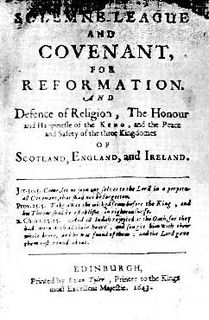 W
WFrom 1649 to 1660, Puritans in the Commonwealth of England were allied to the state power held by the military regime, headed by Lord Protector Oliver Cromwell until his death in 1658. They broke into numerous sects, of which the Presbyterian group comprised most of the clergy, but was deficient in political power since Cromwell's sympathies were with the Independents. During this period the term "Puritan" becomes largely moot, therefore, in British terms, though the situation in New England was very different. After the English Restoration the Savoy Conference and Uniformity Act 1662 drove most of the Puritan ministers from the Church of England, and the outlines of the Puritan movement changed over a few decades into the collections of Presbyterian and Congregational churches, operating as they could as Dissenters under changing regimes.
 W
WUnder Charles I, the Puritans became a political force as well as a religious tendency in the country. Opponents of the royal prerogative became allies of Puritan reformers, who saw the Church of England moving in a direction opposite to what they wanted, and objected to increased Catholic influence both at Court and within the Church.
 W
WThe Great Ejection followed the Act of Uniformity 1662 in England. Several thousand Puritan ministers were forced out of their positions in the Church of England, following The Restoration of Charles II. It was a consequence of the Savoy Conference of 1661.
 W
WJames VI and I, King of Scots, King of England, and king of Ireland, faced many complicated religious challenges during his reigns in Scotland and England.
 W
WThe Millenary Petition was a list of requests given to James I by Puritans in 1603 when he was travelling to London in order to claim the English throne. It is claimed, but not proven, that this petition had 1,000 signatures of Puritan ministers. This carefully worded document expressed Puritan distaste regarding the state of the Church of England, and took into consideration James' religious views as well as his liking for a debate, as written in Basilikon Doron.
 W
WThe Solemn League and Covenant was an agreement between the Scottish Covenanters and the leaders of the English Parliamentarians in 1643 during the First English Civil War. On 17 August 1643, the Church of Scotland accepted it and on 25 September 1643 so did the English Parliament and the Westminster Assembly.
 W
WThe trial of William Laud, archbishop of Canterbury, took place in stages in the first half of the 1640s, and resulted in his execution on treason charges. At first an impeachment, the parliamentary legal proceedings became an act of attainder.